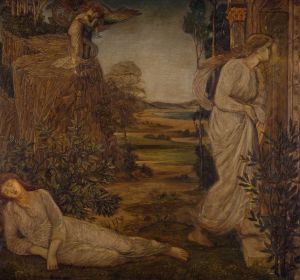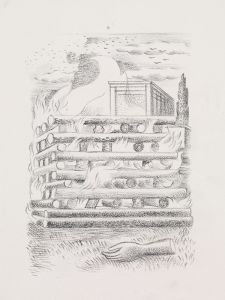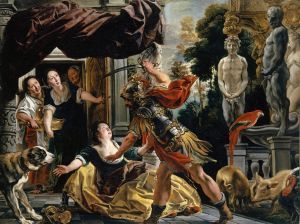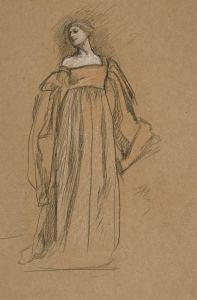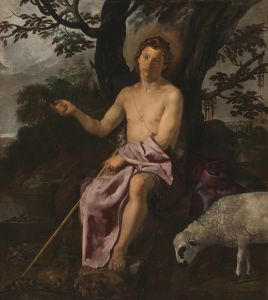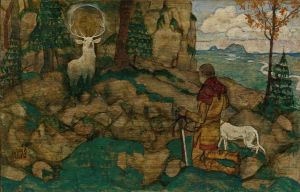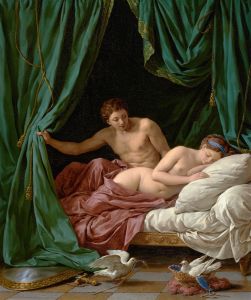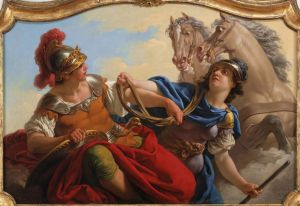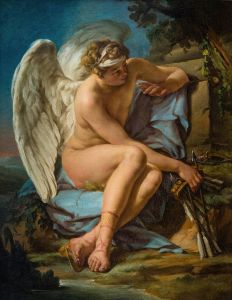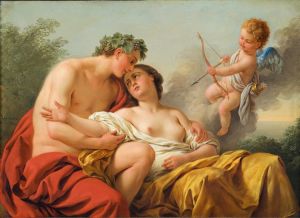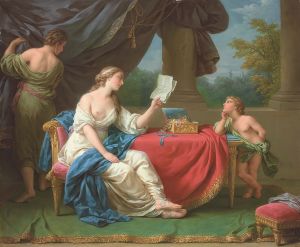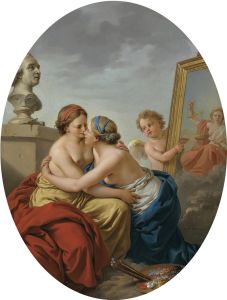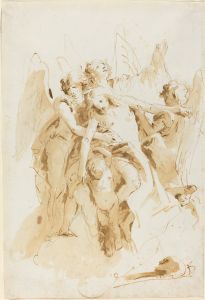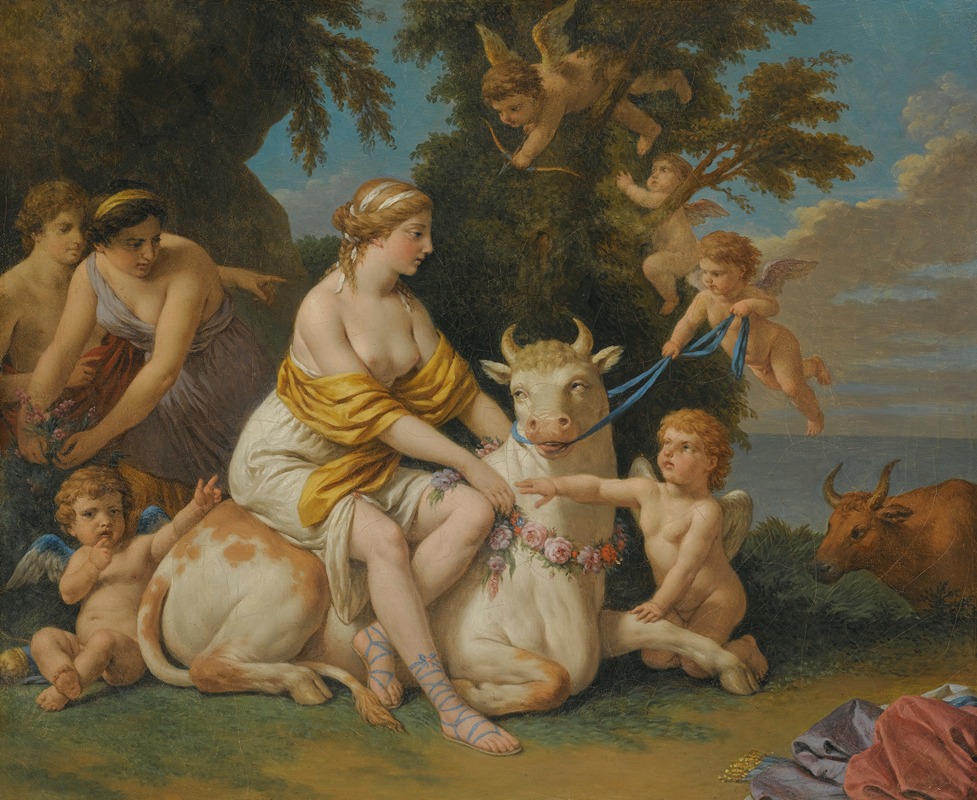
The Rape Of Europa
A hand-painted replica of Louis-Jean-François Lagrenée’s masterpiece The Rape Of Europa, meticulously crafted by professional artists to capture the true essence of the original. Each piece is created with museum-quality canvas and rare mineral pigments, carefully painted by experienced artists with delicate brushstrokes and rich, layered colors to perfectly recreate the texture of the original artwork. Unlike machine-printed reproductions, this hand-painted version brings the painting to life, infused with the artist’s emotions and skill in every stroke. Whether for personal collection or home decoration, it instantly elevates the artistic atmosphere of any space.
Louis-Jean-François Lagrenée's painting The Rape of Europa is a work of art inspired by the classical mythological tale of Europa and Zeus, a story originating from ancient Greek mythology. Lagrenée, a French Rococo painter, was known for his elegant and refined style, often depicting mythological and allegorical subjects. This painting, like many of his works, reflects the Rococo era's fascination with classical themes, sensuality, and decorative aesthetics.
The myth of Europa tells the story of a Phoenician princess who is abducted by Zeus, the king of the gods. According to the myth, Zeus transforms himself into a bull to approach Europa without alarming her. Enchanted by the bull's beauty and gentleness, Europa climbs onto its back, at which point Zeus carries her across the sea to the island of Crete. There, Europa becomes the mother of several of Zeus's children, including Minos, who would later become the legendary king of Crete.
Lagrenée's interpretation of this myth captures the moment of Europa's abduction. The painting typically features Europa seated on the back of the bull, surrounded by a dynamic composition that emphasizes movement and emotion. The artist's use of soft, pastel colors and delicate brushwork aligns with the Rococo style, which often sought to evoke a sense of grace and beauty. The figures in the painting are rendered with a sense of idealized elegance, characteristic of Lagrenée's approach to mythological subjects.
While specific details about the commission, exact date, or current location of this particular painting by Lagrenée are not widely documented, it is consistent with his broader body of work, which often explored themes from classical antiquity. Lagrenée was an accomplished artist who held prestigious positions, including being a member of the Académie Royale de Peinture et de Sculpture and serving as a director of the French Academy in Rome.
As with many Rococo works, The Rape of Europa reflects the period's artistic priorities, focusing on beauty, sensuality, and the reinterpretation of classical myths for a contemporary audience. The painting serves as an example of how 18th-century artists like Lagrenée engaged with ancient stories, transforming them into visually captivating works that appealed to the tastes of their patrons and the cultural elite of the time.
Further details about this specific painting, such as its provenance or exhibition history, are not readily available in existing records.





